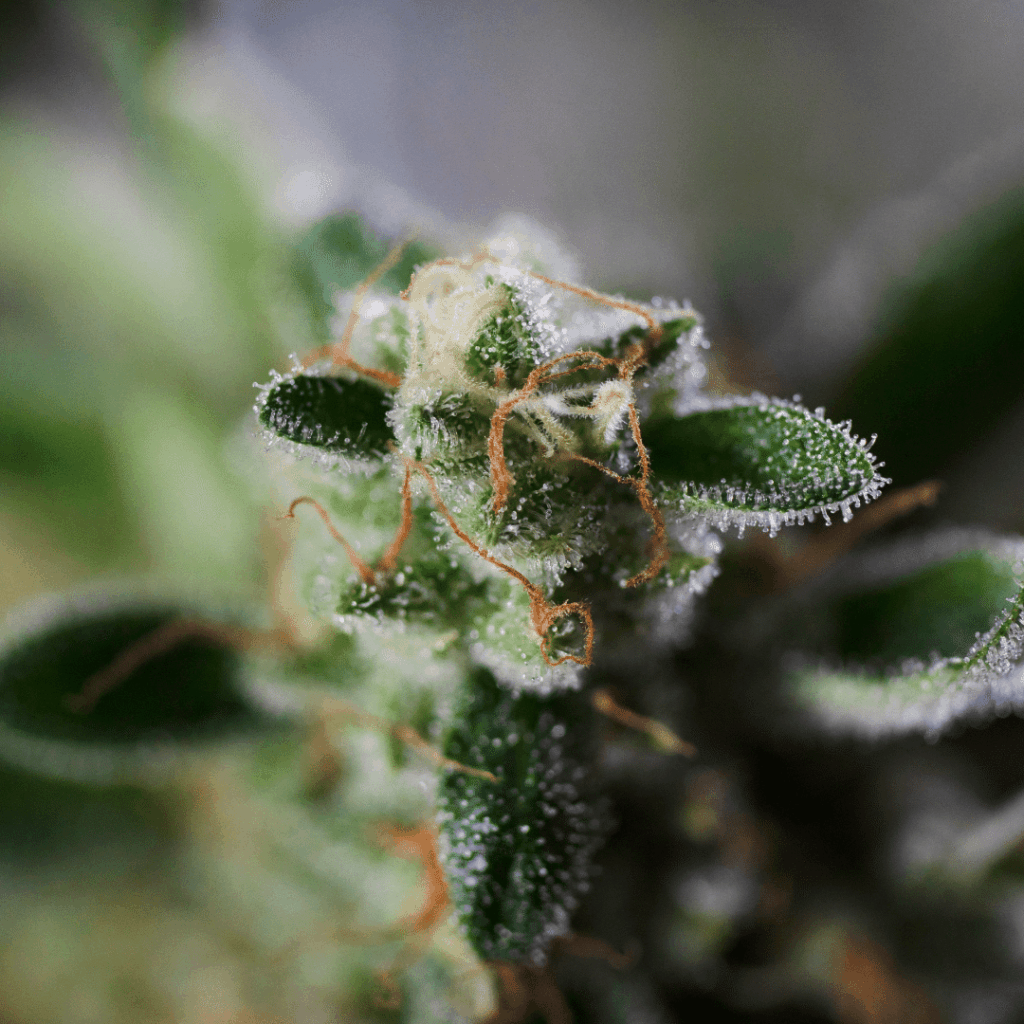The Real Causes of the ‘Sativa vs. Indica’ Experience
As humans, we tend to classify things: right vs. wrong, us vs. them, heck even Stark vs. Targaryen. This is no different when it comes to medical marijuana and the age-old “Sativa vs. Indica” distinction.
Often in popular cannabis culture, Indica weed strains are (sometimes incorrectly) thought to produce a THC-like drowsy or sedative effect while Sativa is generally considered a more energizing, uplifting, and clear-headed weed strain.
While this can be the case, there’s no true-and-tried, cause-and-effect relationship between the experience you have with marijuana and whether it’s Sativa vs. Indica. In other words, the effects of cannabis don’t necessarily depend on whether the strain is a Sativa or Indica.
- So then why does it matter whether you’re using Sativa vs. Indica?
- What’s the impact of Sativa vs. Indica breeds on your cannabis experience?
- And what are the underlying factors that determine the effects of different stains?
Let’s dig into it.
Comparison of Sativa vs. Indica Plants
The difference between Sativa vs. Indica strains essentially boils down to their different biotypes.
| Sativa Plant | Hybrids | Indica Plant |
| - Native to warmer, temperate climates. - Thin branches extending upwards and spread far apart. - Leaves and buds are long, narrow, pointy, and spread far apart. - A lighter shade of green than Indica. - Takes longer to mature with a 10- to 16-week flowering time. - It requires more light and time to grow and mature. - Smaller THC-to-weight ratio because of its relatively low density. | It contains a fusion of Indica and Sativa genetics. | - Native to colder, more mountainous areas. - Shorter and denser than Sativa - Leaves are broad and flat (like the iconic symbol of “marijuana”). - A darker or deeper shade of green. - Grows and matures faster with just a 6- to 8-week flowering time. - Yields a higher percentage of buds per pound. - It usually has a higher THC ratio because of its density. |
But this distinction is more important for breeders and growers than anyone else.
Photo Credit: azmarijuana.com
Categorizing strains as ‘pure Sativa,’ ‘mostly Sativa,’ ‘balanced hybrid,’ ‘mostly Indica,’ and ‘pure Indica’ doesn’t have much to do with its therapeutic potential.
The medical marijuana industry is like any other sector of innovation and production out there. Things start meshing. And then what’s best for the market is what ultimately reigns.
Assumptions about Sativa vs. Indica Strains
| Expected Effects of Sativa (according to popular culture) | Hybrids | Expected Effects of Indica (according to popular culture) |
| - Uplifts the spirit and enhances energy levels - Better for daytime use and social situations - Provides relief from depression, stress, and anxiety - Alleviates pain - Elevates focus, inspiration, creativity, and productivity - Boosts serotonin, a “feel-good” neurotransmitter involved in mood, sleep, learning, anxiety, and appetite. - It provides a serene and even euphoric-like “high.” | Somewhere in between | - Mellow, body-numbing experience - Better for bedtime/nighttime use - Relaxes and lightens the mind - Enhances calmness and sedation - Combats insomnia and other sleep-related problems - Reduces muscle spasms and pain - Fights anxiety and nausea - Increases appetite - Boosts dopamine, another “feel-good” neurotransmitter involved in reward, pleasure, and satisfaction. - It provides the feeling of being “stoned.” |
Photo Credit: azmarijuana.com
But these widespread assumptions about the effects of Sativa vs. Indica strains are not always true. This tunnel vision may even lead you to purchase the wrong cannabis product.
With all the innovations in cannabis breeding, both Indica AND Sativa cannabis strains can offer a wide range of distinctive therapeutic benefits.
Depending on the medicinal purpose of the plant and breeding practices, Indica and Sativa strains can both provide a stimulatory and relaxing experience.
The effects of marijuana strains depend on their CANNABINOIDS and TERPENES...
-not whether we’re talking Sativa vs. Indica.
Is there a Difference in THC vs. CBD Contents?
A weed strain's status as an Indica or Sativa doesn’t usually have much to do with its cannabinoid content. Indica AND Sativa both contain the high-inducing cannabinoid THC and the non-mind-altering cannabinoid CBD.
| CBD/THC in Sativa | CBD/THC in Hybrids | CBD/THC in Indica |
| The average CBD content in CBD-dominant Sativa is 7.1%. The average THC content in THC-heavy Sativa is 17.7%. | The average CBD content in balanced strains high in CBD is 7.8%. The average THC content in balanced strains high in THC is 18.2% | The average CBD content in CBD-dominant Indica is 7.5%. The average THC content in THC-heavy Indica is 17.3%. |
Photo Credit: Leafly.com
Both Indica AND Sativa extracts can express anywhere between 5% and 30% THC. AND their CBD content can range from as little as 0.1% CBD to as much as 20% CBD.
So, there’s not a huge difference.
In today’s rapidly unfolding and evolving medical marijuana industry, determining whether a strain is Indica or Sativa doesn’t tell you a whole lot about the amount of THC vs. CBD.
A broad realm of marijuana strains and selective breeding practices exist today.
- Both Indica AND Sativa with high THC counts can contain as much as 18-30% THC, helping to relieve nausea, pain, and sleep latency.
- Both Indica AND Sativa with high CBD counts can have up to 20% CBD, helping to alleviate anxiety, sleep disorders, and daytime fatigue.
But Sativa or Indica products touting a 30% THC to 10% CBD ratio (or 30% of both) should raise an immediate red flag. Because of the biosynthesis of THC and CBD, this high combo of both THC and CBD just isn’t possible for either Sativa or Indica cannabis strains.
What’s notable, though, is that hybrids tend to express slightly more CBD and THC.
Growers are quite passionate and methodical when it comes to designing and cultivating Sativa vs. Indica hybrids. This precision is necessary to release the distinct and far-reaching therapeutic benefits of Indica and Sativa blends.
Terpene Profile of Sativa vs. Indica Marijuana Strains
Full-spectrum Indica and Sativa cannabis breeds are well-blended cocktails of therapeutic terpenes, cannabinoids, and nutrients.
Terpenes, a large and diverse set of plant-derived compounds, are a HUGE contributor to the powerful, therapeutic entourage effect produced by whole-plant marijuana.
The potent, synergistic biological properties behind the interaction of terpenes and cannabinoids are well-noted and accepted in the medical and scientific literature. Terpenes are also known to produce flavors and scents that are difficult to miss.
But there tend to be unique differences in the terpenoid contents of Sativa vs. Indica strains.
Take a look at the graph below, for example. It provides a visual comparison of the terpenes in ‘mostly Indica’ (represented by black lines) and ‘mostly Sativa’ (represented by white lines) strains.
Photo Credit: www.fundacion-canna.es
The distinct terpenoid profiles of ‘pure’ Sativa vs. Indica cannabis strains have unique medicinal properties with powerful therapeutic benefits.
| Terpenes in ‘Mostly Sativa’ Strains | Terpenes in ‘Mostly Indica’ Strains |
| - The more complex terpene profile. - Dominant terpenoid may be either: - A-terpinolene or α-pinene - β-myrcene - Second most prevalent terpenoid may be either: - Α-terpinolene - Trans-β-ocimene | - Simpler terpene profile than Sativa. - Dominant terpenoid: - Β-myrcene - Second most prevalent terpenoid may be either: - Limonene - Α-pinene |
So...how do these terpenes impact Sativa vs. Indica cannabis products? What are the medicinal effects of terpenes in Indica and Sativa outlined in the table above?
Here’s what you need to know about the most abundant terpenes in Sativa vs. Indica:
- Α-pinene: A powerful therapeutic and aromatic compound that smells like pine trees (hence the name). By binding to and stimulating our cholinergic receptors, a-pinene provides anti-inflammatory, anti-microbial, anti-cancer, AND bronchitis-fighting effects as well as muscle relaxation. It also helps to counteract the memory-impairing effects of THC and improve memory retention.
- Β-myrcene: naturally found in highly aromatic plants and herbs and lends sedative effects, which is helpful for stress, anxiety, and sleep.
- Limonene: a chemical found in the peels of citrus fruits and other plants is beneficial for weight loss, cancer prevention, and bronchitis treatment.
Popular Indica and Sativa (and Hybrid) Strains
Below is a short overview of the long list of common Sativa vs. Indica strains available. Combinations of Indica and Sativa breeds typically include:
- 30% Indica and 70% Sativa varietals
- Balanced or “half-baked” 50%-50% breeds
- 80%-20% Indica vs. Sativa combinations
| ‘Mostly Sativa” Varieties | The World of Hybrids | Popular Indica Strains |
| - Pineapple Trainwreck - AK 47 (i.e., Royal AK) - Lemon Haze - Jack Herer - Power Flower - Silver Haze - White Widow | - Sour Diesel - Blue Dream - Pineapple Express - Girl Scout Cookies - Kandy Kush - Fruity Pebbles - Cherry OG - Yoda OG - Black Dog Kush - Chem Dog - Black Gorilla - Dutch Cheese - Golden Berry - Golden Lemons | - Granddaddy Purple - Pineapple Kush - Master Kush - White Rhino - Northern Lights - G-13 |
But when it’s all said and done, cannabis is still a deeply personal experience. So, how you select your preferred strain should be, as well.
Are you interested in learning more about the differences between Sativa vs. Indica, THC vs. CBD, CBN, and terpene profiles? Explore our knowledge base to discover the best practices to maximize your cannabis experience and achieve your therapeutic objectives.



Comments are closed.